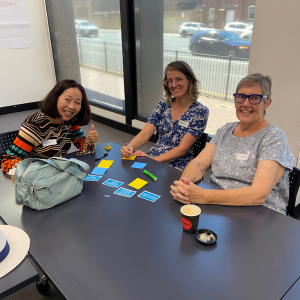It’s the discovery spanning 700 million years of evolution that has the scientific community buzzing. Long before dinosaurs roamed the earth, the humble sea sponge was one species that dominated life on this planet. Now in a momentous breakthrough, Australian scientists have found that humans, and most likely the entire animal kingdom, share important genetic mechanisms with a jelly-like sea sponge that comes from the Great Barrier Reef.
Published in one of the most prestigious journals “Science”, the breakthrough reveals that some elements of the human genome (an organism’s complete set of DNA) are functioning in the same way as the prehistoric sea sponge. Incredibly this means it has been preserved across 700 million years of evolution. This mechanism drives gene expression, which is key to species diversity across the animal kingdom.
The significance of unravelling a mystery of this magnitude is not lost on lead researcher Dr Emily Wong from the Victor Chang Cardiac Research Institute and UNSW Sydney.
“This is a fundamental discovery in evolution and the understanding of genetic diseases, which we never imagined was possible. It was such a far-fetched idea to begin with, but we had nothing to lose so we went for it,” explains Dr Wong.
“We collected sea sponge samples from the Great Barrier Reef, near Herron Island. At the University of Queensland, we extracted DNA samples from the sea sponge and injected it into a single cell from a zebrafish embryo. Without harming the zebrafish, we then repeated the process at the Victor Chang Cardiac Research Institute with hundreds of embryos, inserting small DNA samples from humans and mice as well.”
“What we found is despite a lack of similarity between the sponge and humans due to millions of years of evolution, we identified a similar set of genomic instructions that controls gene expression in both organisms. We were blown away by the results!” said Dr Wong.
According to scientists, the sections of DNA that are responsible for controlling gene expression are notoriously difficult to find, study and understand. Even though they make up a significant part of the human genome, researchers are only at the beginnings of understanding this genetic “dark matter”.
“We are interested in an important class of these regions called ‘enhancers’. Trying to find these regions based on the genome sequence alone is like looking for a light switch in a pitch-black room. And that’s why, up to this point, there has not been a single example of a DNA sequence enhancer that has been found to be conserved across the animal kingdom.”
Working alongside Dr Wong is her husband and co-senior author on the paper, Associate Professor Mathias Francois, from the Centenary Institute. “This work is incredibly exciting as it allows us to better ‘read’ and understand the human genome, which is an incredibly complex and ever-changing instruction manual of life,” says A/Prof Francois.
”The team focused on an ancient gene that is important in our nervous system but which also gave rise to a gene critical in heart development.” The findings, he says, will also drive biomedical research and future healthcare benefits too.
“Being able to better interpret the human genome aids our understanding of human processes, including disease and disorders, many of which have a genetic basis. The more we know about how our genes are wired, the better we are able to develop new treatments for diseases.”
Professor Bernard Degnan, co-senior author of the paper from the University of Queensland adds, “This new knowledge will feed into future research studies across the medical, technology and life sciences fields.”
“We are still a long way from a clear understanding of how DNA precisely shapes morphology in health and disease but our work is an important step in that direction,” says Dr Wong.
Researchers on this study are affiliated with the University of Queensland, the Victor Chang Cardiac Research Institute, Centenary Institute, UNSW Sydney, Monash University, University of Melbourne and University of Sydney. The research was also funded by the Australian Research Council.








